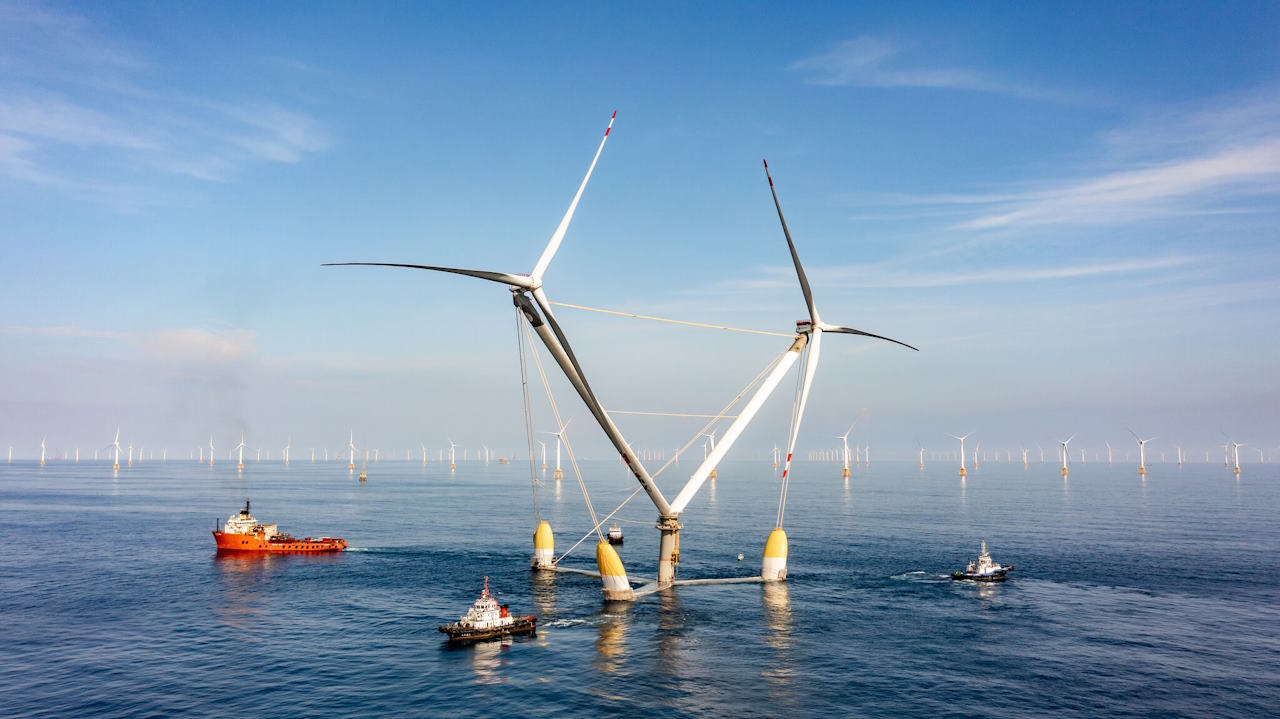
As the global leader in offshore wind development, a Chinese turbine manufacturer has designed a two-headed behemoth that will generate 50 megawatts on its own.
Blazing past renewable energy targets, the wind lobby in Beijing are serious players, unlike in Europe and North America where investment and R&D has lagged behind solar power.
Ming Yang Smart Energy already makes one of these two-headed turbines, but is planning to debut one that’s double the size of its existing model in 2026.
This Fortune 500 China-edition company is the undisputed world leader in wind turbines, particularly offshore ones, but not exclusively. It lays claim to both the most powerful land and offshore wind turbines in service today.
It developed the first typhoon-resistant floating turbine mooring, which was tested in September when Super Typhoon Ragasa passed over the entire 1,345-unit offshore fleet, and not one was upended. Every single one remained operational.
In 2024, the company debuted the previously mentioned double-rotor turbine—called the OceanX—consisting of two 8.3 MW turbines installed on 219-meter towers at an angle atop a floating platform. For comparison, the top-end turbines in the Moresea 1 wind farm in Great Britain generate 9 megawatts.
Just one OceanX in ideal conditions is boasted as having the capacity to power 30,000 homes annually. The counter rotating blades increase each turbine’s output beyond what the wind can do alone, but during testing the blades broke off from the force.
Nevertheless, the company managed to find buyers, and the OceanX was soon installed at the Yangjiang Qingzhou IV offshore wind farm, off the southeast China coast.
Marketing for the 50MW leviathan has already begun, with production slated for next year according to company boss Zhang Qiying who spoke at a Beijing conference recently. Such a turbine would drop the cost-per-kilowatt for wind energy in the Guangzhou area to around one-fifth of the current price for offshore wind energy in Europe.
Offshore wind power comes in for more criticism from environmentalists than land-based turbines, and so has been subjected to more research into its effects. However, with most of the world’s largest offshore wind farms coming online within the last decade, the body of evidence is limited.
CHINA’S RENEWABLE MARCH: A City in China is Planning an Offshore Wind Farm So Big It Could Power All of Norway
Regarding collisions with birds, one 2022 study found that it was “unlikely that small-scale displacement by single wind farms would have an impact at the population level,” of migratory seabirds, which the study team found were at a 75-92% lower abundance inside the boundaries of the wind farm than out of it.
Concerns over disturbances among whales and the seabed sediment have also been raised, as well as offshore farms’ impact on coastal tourism, and their susceptibility to sabotage.
WIND POWER STORIES: New Airship-style Wind Turbine Can Find Gusts at Higher Altitudes for Constant, Cheaper Power
One surefire way to reduce these eco-impacts would be to reduce the number of turbine units in a given wind farm, and the best way to do that would be find a way for turbines to generate more electricity. 50 MW would be a truly astonishing operational achievement, and represent as much as a 15-fold increase in per-unit power generation compared to some turbines deployed in the North Atlantic.
With such an abundance of energy, farms in sensitive environmental areas like whale or migratory seabird routes could substantially reduce their turbine counts if the Ocean’XL’ was part of the farm’s fleet.
SHARE The Future Of Offshore Wind With Your Friends On Social Media…


Leave a Reply